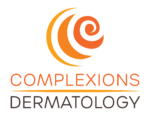SEBORRHEIC KERATOSES
Offering Options To Treat A Variety Of Skin Conditions
Seborrheic keratoses are common skin growths that develop in middle age and older adults. They are benign and, due to their appearance, can also be referred to as “barnacles of aging.” Seborrheic keratoses have a wide range of colors from white to black and most often appear tan or brown with a waxy, scaly, raised surface. They may also form anywhere on the body, except for the palms of the hands and soles of the feet. These common, noncancerous skin growths are harmless and usually do not require any treatment.
Causes and Symptoms of Seborrheic Keratoses
Seborrheic keratoses tend to run in fair-skinned families. People over 50 who have been exposed to the sun are more likely to develop this condition; however, it can develop in areas that are not exposed to the sun and younger people as well.
Because seborrheic keratoses can present in a wide range of colors and sizes, it is important to get to know the moles, freckles, sunspots and other blemishes on your skin so that you can identify any changes that may occur. Seborrheic keratoses can:
- Be flat or raised with a scaly surface
- Range in size from small to large (1 inch across)
- Range in color from white to black, but most appearing tan or brown
- Be round or oval-shaped
- Commonly form on the chest, neck, scalp, back and stomach
- Have a waxy and “stuck on” look
Diagnosing and Treating Seborrheic Keratoses
At Complexions Dermatology, located in Danville and Colonial Heights, Virginia, our expert dermatologists are highly trained in diagnosing and treating a wide range of skin conditions such as seborrheic keratoses. Our providers will perform a thorough examination of your skin and make an accurate diagnosis of your particular mole or skin condition. There is usually no treatment required for seborrheic keratoses unless it is bothering you or getting caught on clothing or jewelry. If it becomes irritated easily, there are some options to treat it.
- Cryotherapy – liquid nitrogen is applied to the growth to “freeze” it off. This will take a few days to heal.
- Electrocautery – after a local anesthetic is applied, an electric current is used to destroy the growth. This procedure can be combined with curettage, which uses a scalpel to scrape away the growth.
If you need an annual skin screening or have any questions or concerns about skin growths on your body, call Complexions Dermatology today at our Danville location (434) 792-0423 or our Colonial Heights location (804) 805-8442.




